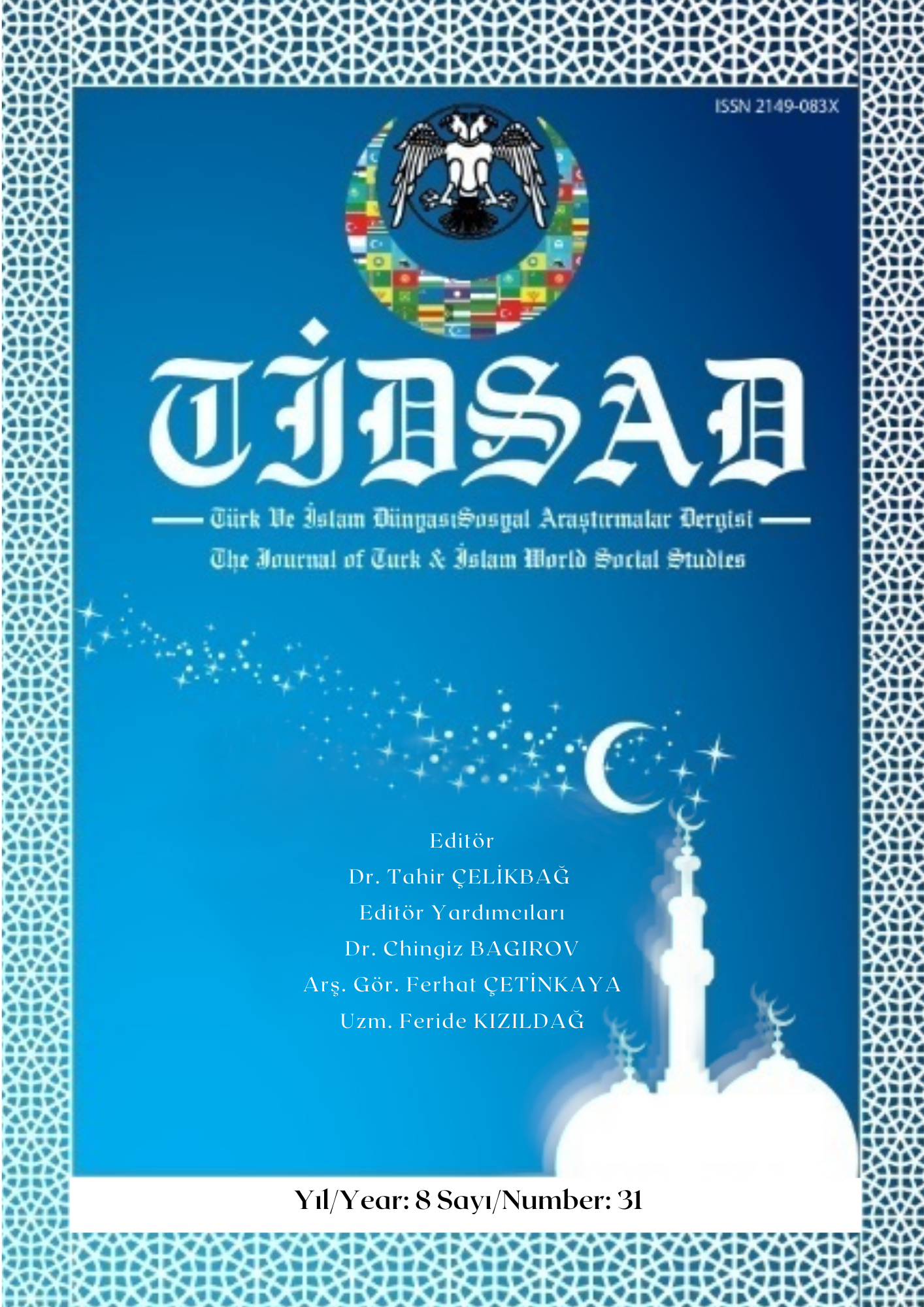Author :
Abstract
Müzik tarihinde korrepetisyon (eşlik etme) tarihi çok eski olan bir kavramdır. Eşlik ya da solo çalgı ile yapılabilen bu eylem; bir sese, bir çalgıya eşlik etme anlamına gelir. Günümüzde çoğunlukla piyano ile yapılan korrepetiyon, aslında hem solo hem eşlik çalgısı olan ve çoksesli özelliği taşıyan Klasik Gitarla da yapılabilir. Gitar literatürü incelendiğinde pek çok gitarist bestecinin eserlerinde klasik gitarın korrepetisyon çalgısı olarak kullanıldığı görülmektedir. Bu araştırmada klasik gitarın flüt eserlerinde korrepetisyon çalgısı olarak kullanımı literatür taranarak incelenerek; gitar literatürünün önemli bestecilerinden olan Matteo Carcassi, Fernando Sor ve Mauro Giuliani adlı bestecilerin eserlerinden örnekler sunulmuş ve sunulan örneklerin flüt eğitiminde kullanılabilirliği değerlendirilmiştir. Günümüzde birçok flüt eğitmeni tarafından eşlik çalgısı olarak fazla kullanılmayan gitar enstrümanıyla birlikte seslendirilen eserler, çalıcının enstrümanına olan ilgisinin artırılması anlamında repertuarına farklı bir renk katmaktadır. Bu bağlamda çalışmada flüt ve gitarın ses özellikleri bakımından birbiri ile çelişmeyen enstrümanlar olması ile birlikte seslendirildiğinde farklı ve alışılmadık tınıların elde edildiği görülmektedir.
Keywords
Abstract
Correpetition is a concept with a very old history in the history of music. This action can be performed with accompaniment or solo instrument; means accompanying a sound or an instrument. The composition, which is mostly done with the piano today, can also be performed with the Classical Guitar, which is both a solo and an accompaniment instrument and has a polyphonic feature. When the guitar literature is examined, it is seen that the classical guitar is used as a composition instrument in the works of many guitarist composers. In this research, the use of classical guitar as a composition instrument in flute works was examined by reviewing the literature; Examples from the works of composers Matteo Carcassi, Fernando Sor and Mauro Giuliani, who are among the important composers of guitar literature, were presented and the usability of the presented examples in flute education was evaluated. The works performed with the guitar instrument, which is not used as an accompaniment instrument by many flute instructors today, add a different color to the repertoire in terms of increasing the interest of the player in his instrument. In this context, it is seen that different and unusual timbres are obtained when the flute and guitar are instruments that do not contradict each other in terms of their sound characteristics.
Keywords
- Aktu ze, I . (2004). Müziği Anlamak Ansiklopedik Müzik Sözlüğü (2.Basım). I stanbul: Pan Yayıncılık.
- Hepyu cel, C. ve Yıldırım, H. K. (2017). Tu rkiye’de Flu t Eg itimi Veren Mu zik Kurumlarında Eşlikli Çalışmanın Yeri. Ahi Evran Üniversitesi Eğitim Fakültesi Dergisi (KEFAD), 18, (1), 485-501.
- Kurtuldu, M. K.(2018). Mu zik O g retmeni Adaylarının Piyanoda Eşlik Çalma Becerileri ile I şitme ve Armoni Dersi Başarıları Arasındaki I lişki. ASOS Journal The Journal of Academic Social Science (Akademik Araştırmalar Dergisi), 6 (78), 1-10.
- O zel, I.(2012). Bireysel Ses Eğitiminde Piyano Eşliğinin Önemi. Yu ksek Lisans Tezi, Afyon Kocatepe U niversitesi Sosyal Bilimler Enstitu su Mu zik Anasanat Dalı
- Say, A. (2005). Müzik Ansiklopedisi I. Cilt. Ankara: Mu zik Ansiklopedisi Yayınları.
- Say, A. (2005). Mu zik So zlu g u (2. Basım). Ankara: Mu zik Ansiklopedisi Yayınları.
- Türk Dil Kurumu Türkçe Sözlük (1998) . I ve II. cilt (9.Baskı). Ankara.
- Yurga, C. ve Kaya, Z. (2009). Yeniden yapılanma su recinde mu zik o g retmenlig i programlarındaki korrepetisyon dersi eksiklig i. 8. Ulusal Müzik Eğitimi Sempozyumu (23-25 Eylu l 2009, Samsun, ss.123-128), Samsun: Ondokuz Mayıs U niversitesi Yayınları.
- Yılmaz, H.; Şen, U . S.(2016). Gitarın Popu lerlik Durumunun I ncelenmesi. İdil Dergisi, 5 (25), 1491-1521.
- www.freescores.com, (Erişim tarihi:08.10.2021)
- https://stringfixer.com/tr/Matteo_Carcassi#:~:text=Carcassi, (Erişim tarihi:08.10.2021)
- https://www.guitardaily.net/blog/fernando-sor-nota-biyografi, (Erişim tarihi:08.10.2021)
- https://karnaval.com/sanatcilar/mauro-giuliani-5027, (Erişim tarihi:08.10.2021)





